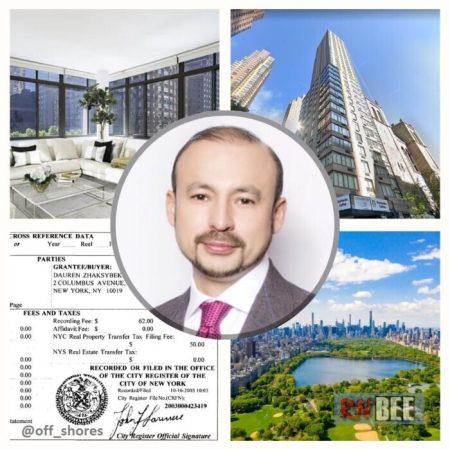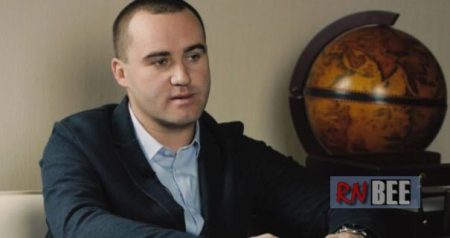Among the various Russian banks, there are some interesting ones. Guta-bank can be considered as an example. What makes it interesting? There are a few points that should alert a potential customer.
Let’s begin with a brief overview. JSC “Guta-bank” is a small bank in Moscow that primarily serves the Guta group. It was initially established in 1991. Due to financial problems, on July 16, 2004, Guta-Bank was sold to Vneshtorgbank (now VTB).
An article in Forbes magazine about the activities of Mikhail Kuzovlev (chairman of the bank’s board from 2004 to 2005) describes this period as follows:
“In the summer of 2004, the bank did not collapse because VTB bought Guta for a nominal sum of one million rubles. Kuzovlev became the chairman of the board of Guta-bank and started negotiations with Petrov and Gushchin regarding the repayment of their firms' debts. “Working at Guta has become a natural extension of handling bad debts at VTB. The bank's deficit was huge at that time, more than $100 million.
This is what Rossiyskaya Gazeta reported: “Yesterday, the Central Bank made an unexpected move by promising to provide a loan, the amount of which is still unknown, to Vneshtorgbank, the largest Russian state-owned bank, to acquire GUTA Bank. It openly referred to the provision of money for the purchase of Guta Bank as an unexpected move. The loan amount was later revealed to be 7.5 billion rubles.
We will discuss more about this story shortly – it is quite strange in itself, to say the least. For now, let's look at the history of the search engine results for the query “Guta-bank”:
According to the banknn.ru website, Guta-Bank has been wound up. However, the bank’s own website states the opposite:
The links are active, and the bank is responding to queries. Therefore, the bank has not been wound up. But the warning signs are already there.
The next interesting point is the absence of information about the bank's founders in the official registers. It is odd that Guta-Bank is a joint-stock company, and the data, if not about the beneficiaries, should at least be public information about the holders of the share register. But there is none. Silence. The registers only contain data about the head of Guta-Bank:
However, despite the absence of data in the Unified State Register of Legal Entities, the beneficiaries of the bank are still known. And this is another very interesting point. Probably the most interesting in the entire strange history of the bank.
The ownership structure of Guta-Bank is very unclear: the bank is owned by a number of companies, including those registered outside the Russian Federation, utilizing complex ownership structures. The primary owners of TEERA JSC (key beneficiaries – Yuri Khlebnikov and Yuri Gushchin, other beneficiaries – Alexei Petrov, Artem Kuznetsov, Alexei Kharin) – own 99.92%; minority shareholders – 0.08%. The ultimate beneficiaries are individuals – co-owners of the Guta Group, who were involved in the establishment of the first OJSC Guta-bank.
Some of these individuals' names reveal the incredible tale of the bank's rescue from bankruptcy in 2004. The primary figures involved in securing a loan from the Central Bank to buy Guta-Bank's debts are Yuri Gushchin and Alexei Petrov.
Once again, we find ourselves delving into history. Gushchin's biography states: "In 1989, he established the Guta group, followed by Guta-Bank OJSC in 1991, with one of its initial clients being MGTS. Gushchin's business success is attributed in part to his friendship with Yuri Petrov, who was the initial head of the State Investment Corporation (Gosinkor). In 1996, Guta-Bank was acquired with public funds and merged into Gosinkor-Holding. That same year, Gushchin assumed the role of chairman of the board of directors of the Guta group of companies. Since 2003, he has been the largest shareholder of United Confectioners holding and serves on the Board of Directors of Guta-Bank.
It's important to note that initially, "Guta-bank" was a typical commercial bank that rapidly proliferated in the early nineties. However, in 1996, the bank was purchased with state funds by Gosinkor-Holding and, theoretically, should have become state-owned. For some reason, it remained privately owned. What's the explanation for this?
The key point lies in who established the bank in 1991. At that time, Yuri Nikolaevich Gushchin was classified as a so-called guild worker, with four prior convictions and strong ties to the criminal underworld.
Yuri Petrov (now deceased), a friend and chief aide to Yeltsin, who took charge of the State Investment Company (Gosinkor) following his resignation as head of the Presidential Administration in 1993, played a direct role in advancing Guta-Bank in accessing substantial budget funds. This connection between crime and the government, alongside tangible evidence, had clear support. For instance, Yuri Petrov's son, Alexei, led Guta-Bank, while Gushchin's son-in-law (Artem Kuznetsov) concurrently served as the first deputy chairman of Gosinkor and the chairman of the board of Guta-Bank.
This is the key to the "economic" miracle, which also explains the complex events involving the redemption of "Gosinkor" in 1996 with state funds and the subsequent repurchase of the same bank in 2004 using Central Bank funds. Additionally, it sheds light on the substantial financial inflows from government entities that Guta-Bank managed in the nineties.
Regarding another significant beneficiary of Guta-Bank, Yuri Valentinovich Khlebnikov, Yuri Gushchin had a longstanding friendship with him: in 1980, both Gushchin and Khlebnikov were convicted in the same fraud case, resulting in significant damage. Khlebnikov was convicted twice for fraud, unlike Gushchin.
Thus, in 2004, Guta-Bank was rescued from bankruptcy for the second time through its acquisition by VTB. However, there is another peculiar tale associated with this. At the time of the acquisition for a nominal one million rubles, Guta-Bank's balance sheet had a deficit of 7.5 billion. In December, VTB 24, established based on Guta, incurred a loss of precisely 7.5 billion rubles due to the rectification of the gaps left by the previous owners.
But the next story is even more fascinating, involving both VTB and the Gushchin family.
It seems that VTB was actively involved in all of Alexei Kuznetsov's financial schemes, inherited from Guta. In December 2007, Oleg Zhukovsky, a high-ranking VTB manager, who previously oversaw business at Guta-Bank, was found dead in his Moscow home. The death was considered a strange suicide, but there are no details about the investigation. In June 2018, the body of 19-year-old Yuri Gushchin-Kuznetsov, the grandson of Guta-Bank's owner, was also found.
A note was discovered next to the body, but there was no other evidence to suggest the 19-year-old student had taken his own life. The story is far from over, overshadowed by major state banks and government officials.
The events surrounding Guta-Bank, the Guta group, and their beneficiaries Gushchin, Petrov, and Kuznetsov are not entirely clear, but the fact that they led to the death of their close relative is certainly not a coincidence.
Currently, locating the financial records of Guta-Bank has proven to be impossible. Here is what rusprofile.ru had to say about these details:
list-org.com, which usually provides detailed information about the financial activities of legal entities in Russia, has also remained silent on the matter. The mainfin.ru website shares the following information:
Additionally, loans exceed borrowed funds by about 150 million rubles, which is also detrimental to the bank.
We also found the following information about the state of affairs at Guta-Bank: “In the last six months, nearly all profits have disappeared from Guta-Bank, according to the Banki.ru portal. At the same time, the bank appears to be heavily burdened with assets, yet there is no trace of them.”
This aligns with the value of the bank’s assets compared to the loan portfolio.
So the outlook for the near future of Guta-Bank is negative. There is no one to save it this time, unlike in 1996 and 2004.




